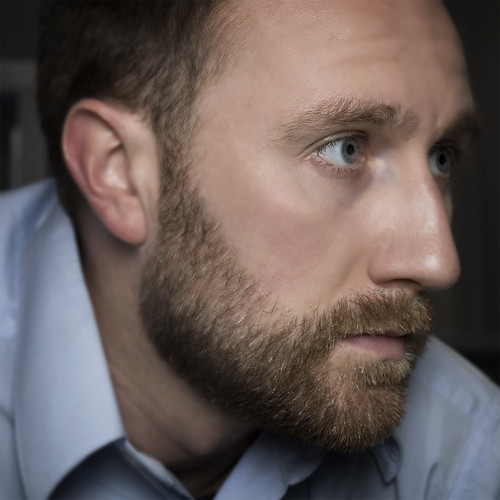 The art department needed a new group photo to go onto the school's website. So I began to develop an idea in my mind that eventually produced the final image that you see above.
The art department needed a new group photo to go onto the school's website. So I began to develop an idea in my mind that eventually produced the final image that you see above.I've been a fan of Annie Leibovitz's group portraits that she has done over the years for Vanity Fair. One photograph in particular, April 2001: Master Class, was one of my favorites that I thought I might be able to emulate for our department shot.
I had read once that for some of her group portraits that not everyone could make the scheduled shoot, so they had to photograph them on different days and then join them later in a composite image via Photoshop. Another aspect of her shoots is that she uses a specific light source for every little bit of lighting in the shot. I figured I could do the PS work, but the lighting might be a little tricky, considering I only had one good softbox for lighting. And after a little scouting on campus, I settled on the LRC fireside location that seemed to work out fine (aside from all our giggling and laughing while students were trying to study...sorry).
I had the final image in my mind, and in the end, everything came together...for the most part.
 This is the finished PS file. It's pretty big, a little over 200 Mb with 14 layers. There are five layers with actual people on them and the rest are adjustment layers and other necessary effects to help blend the image together.
This is the finished PS file. It's pretty big, a little over 200 Mb with 14 layers. There are five layers with actual people on them and the rest are adjustment layers and other necessary effects to help blend the image together. Karen and Elissa came about 30 min. earlier than everyone else due to schedule conflicts, etc. After individual head shots, I placed them together for the group shot. I had set up the chairs in front of the fireplace and a tripod from where I'd shoot. I already had the layout in mind before making the first shot. I wish I had a diagram drawn out to show you, but honestly it was all in my head (a dangerous place to be).
Karen and Elissa came about 30 min. earlier than everyone else due to schedule conflicts, etc. After individual head shots, I placed them together for the group shot. I had set up the chairs in front of the fireplace and a tripod from where I'd shoot. I already had the layout in mind before making the first shot. I wish I had a diagram drawn out to show you, but honestly it was all in my head (a dangerous place to be).This is the only image that contains two people that ended up on the same layer.
 A little bit later everyone else showed up. And again after headshots, I began to set up the group shot. Boris was first. If you'll notice, the lighting (my small softbox) moves for each shot, giving a unique Leibovitz-esque feel.
A little bit later everyone else showed up. And again after headshots, I began to set up the group shot. Boris was first. If you'll notice, the lighting (my small softbox) moves for each shot, giving a unique Leibovitz-esque feel. Then, by using a self time, I photographed Juilee, Daniel and myself. In the end I only used Juilee from this shot.
Then, by using a self time, I photographed Juilee, Daniel and myself. In the end I only used Juilee from this shot.
 I was happy with Daniel from the previous shot, but I had done another with the softbox in a different location. As a result the shadows on his face become more dramatic, which I liked. I was fortunate–I didn't realize how close Daniel would be to Karen, but it worked out in the end.
I was happy with Daniel from the previous shot, but I had done another with the softbox in a different location. As a result the shadows on his face become more dramatic, which I liked. I was fortunate–I didn't realize how close Daniel would be to Karen, but it worked out in the end. Then for safe measure, I did a couple more shots of myself (Daniel pushed the trigger for me). And again I was glad a took a couple extra shots because I liked one of the other shots of myself as well.
Then for safe measure, I did a couple more shots of myself (Daniel pushed the trigger for me). And again I was glad a took a couple extra shots because I liked one of the other shots of myself as well.In the end, most of the entire image comes from the shots of Juilee and Boris. The rest was just filling in the other figures and fixing lighting problems to match the overall look. The big key to success was shooting with the camera on a tripod–as a result, all the images blended together pretty seamlessly.
Shot with a Nikon D200, SB-800 flash, small softbox.









































